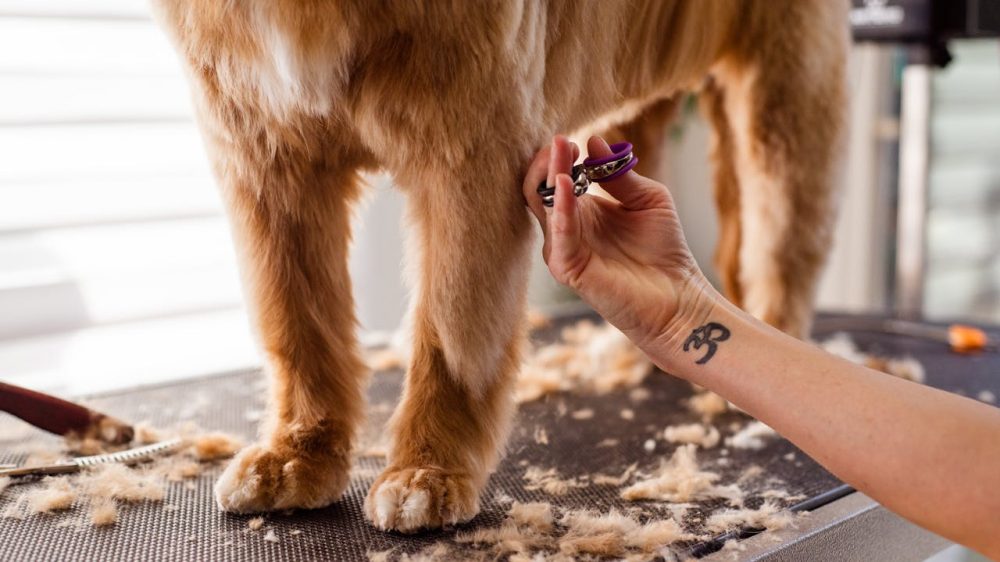One of the requirements of being a good pet owner is to groom your dog. It keeps your dog clean, healthy, and comfortable. Most breeds of dogs require different grooming. For example, long-haired dogs need more attention compared to short-haired dogs. The signs of discomfort can be relieved by grooming. It helps the dog to be less anxious and calm when you comb their hair. Frequent grooming helps to reveal possible issues in time, avoids matting the fur, and keeps the skin in good health. This article is aimed at giving specific grooming tips that will assist you in customizing your grooming process.
Understanding Coat Types and Their Care Needs
The grooming frequency will simply depend on the type of coat your dog has. The short haired breeds such as beagles do not need much grooming unlike the long-haired breeds such as Lhasa Apsos who actually require to be groomed at least once a week to prevent tangling. Curly or wired dogs like Poodles require special care to keep them in an elegant shape and ensure that they do not develop mats. Dogs that are docked like Siberian Huskies also have to be brushed at least once a week because they shed their hair twice a year. The denseness of the coat also influences drying and cleaning as the moist coat is difficult to dry. Gear up for the grooming routine by understanding the coat characteristics of your dog and by incorporating them into a uniform grooming plan.
Small Breeds and Their Grooming Routines
Even small-sized dogs don’t compromise on the grooming requirements. Breeds such as Dachshunds with their fine coats or Pomeranians with fluffy fur must be brushed frequently to maintain their look and be mat free. Bathing these small breeds, usually every month, helps with the health of their soft skin. It should not be forgotten that nails should be trimmed every two weeks, and the ears of such little ones should also be cleaned to help them feel comfortable and avoid infections. These pets can be kept tidy with regular or daily grooming and prevent the pet’s hair from spreading everywhere in the house. Developing a proper grooming routine will help to maintain their small size in a nice and clean appearance.
Medium and Large Breeds with Higher Grooming Demands
Medium sized and large dogs such as the Golden Retrievers and German Shepherds require a lot more grooming because of their coarse coats. They should be brushed more than once or twice a week, or they may form tangles and over shed. Baths should also be part of the routine in order to ensure the coats are clean and do not have dirt. Investing in decent grooming tools such as slicker brushes helps to penetrate the dense fur and keep it neat. Developers of D-flea not only have ideas about dog hygiene but also hygiene to take care of large dog breeds. An attention-grabbing pattern in grooming beforehand allows you to save time and stay ahead of any potential styling or cleaning messiness.
Special Care for High Maintenance Breeds
Certain breeds need further grooming efforts to be in their best shape. To maintain the long coats, your Maltese or Bichon Frise requires taking a trip to a professional groomer every 4-6 weeks. A lot of owners search for dog grooming in Tanglewood or wherever they live because they want their pet to be attended to by the professionals and have their hair type properly taken care of. You should consider eye and paw trimming as well as implementing a brushing schedule to avoid matting with such a breed. Daily checks help you to spot blankets on sensitive skin, especially in dense coats. Additional areas such as the anal glands are also important to keep the general health and comfort of these dogs. By considering these grooming requirements as a basic routine, you can avoid painful matting, medical issues in these high-maintenance dogs.
Building a Routine for Health and Comfort
Establishing a routine provides your dog with health and comfort but it should be simple and efficient. Incorporate the daily grooming habits such as brushing their coat or cleaning the ears into daily care. Apply the correct materials such as mild shampoos and rubber brushes that are compatible with the type of coat of your dog. Establish an easy setting during times of grooming so as to reduce stress and nervousness. Praise and reward will always help your dog support grooming and correlate it with positive associations. Cleaning, satisfaction, and the development of a strong relationship between you and the dog are the ultimate results of regular grooming.
Conclusion
Making grooming a daily routine simply leads to better health and happiness in dogs. The right routine, whether brushing or a short bath, can help you adapt different coat types and perspectives. Early noticing any changes in your dog’s coat or skin indicates the need for veterinary attention in good time. The combination of home grooming with professional services when needed strengthens the bonding and makes your dog feel and look good. Regular grooming contributes to your dog’s comfort and builds self-esteem and makes your dog feel fresh and relaxed every single day of the year.
